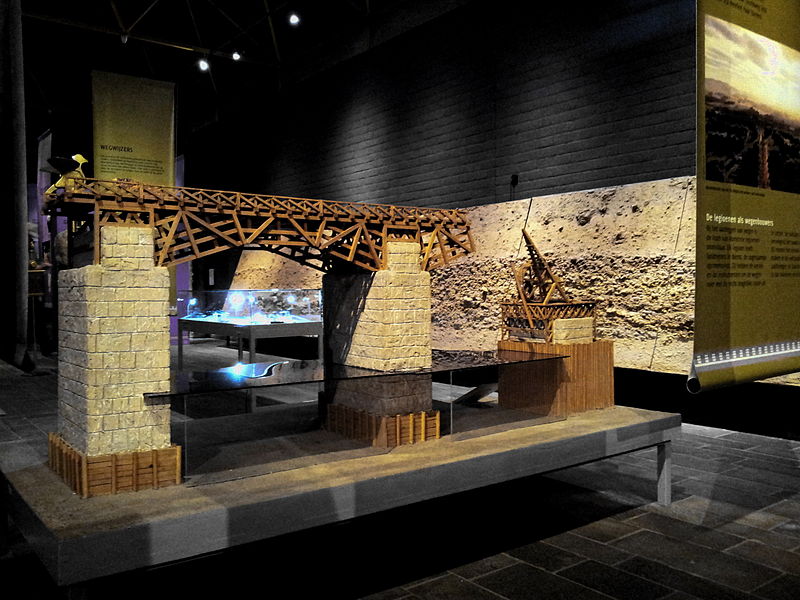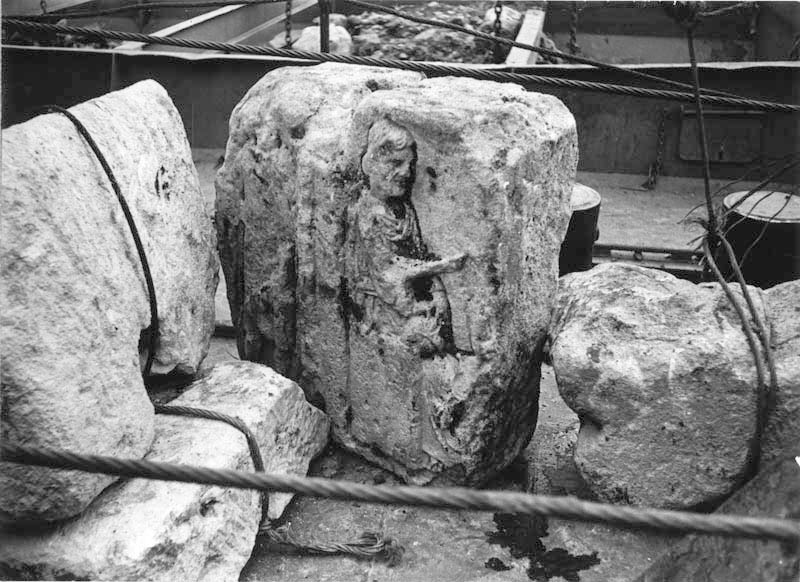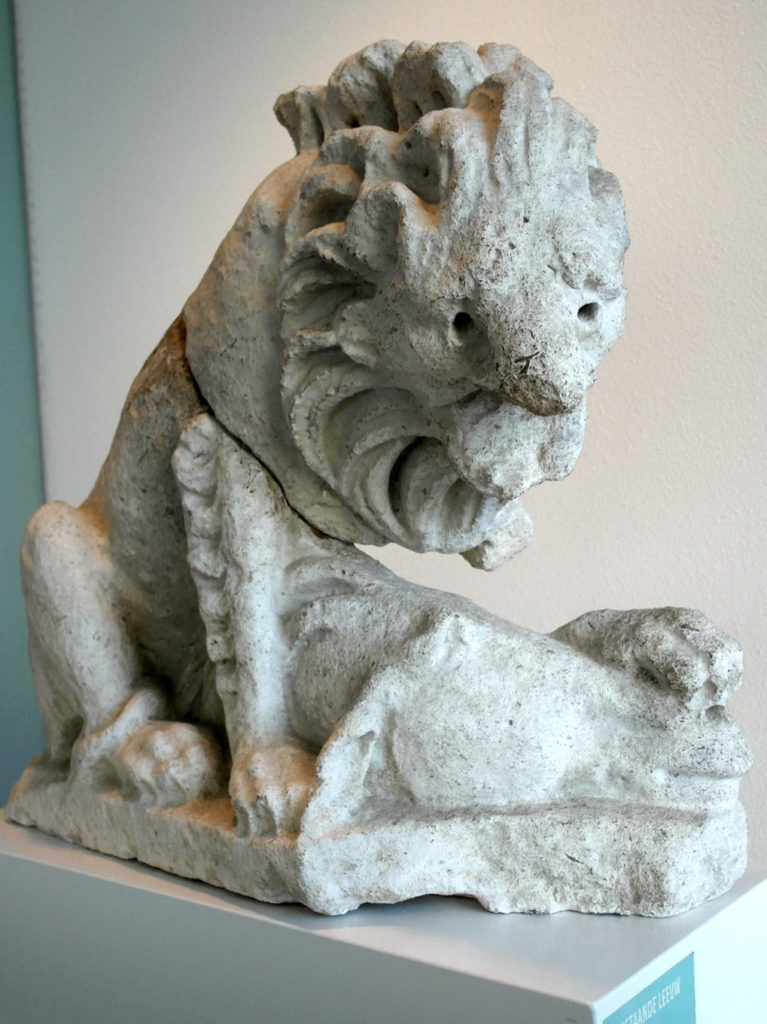
Reconstruction of the Roman bridge in Traiectum ad Mosam(Maastricht), which stretched across the Maas River, and was part of the via Belgica road. Part of the exhibition, “Via Belgica,” at the Thermenmuseum, Heerlen, Limburg, The Netherlands. (Image credit: Kleon3, Own work, CC BY-SA 3.0)
The Roman bridge in Traiectum ad Mosam most likely replaced a much older bridge, possibly built by the Eburones. It is speculated that the Romans had reinforced a previously existing bridge on the site around 10 BCE as they laid out the Via Belgica roadway. They had already built bridges in Tongeren (30-20 BCE) and Cologne (37 or 19 BCE) while establishing Roman settlements along the Germanian frontier. It would have been most important to bridge the Maas, which was irregular in its flow, especially if the army needed to mobilize the five legions stationed in Cologne.
However, the only bridge with archaeological evidence is the later Roman bridge built in the first half of the 1st Century CE during the reign of Augustus, most likely by the infamous general and member of the Imperial Family, Drusus. The remains of the Augustan era bridge were excavated from the water of the Maas. These remains included foundation piles and, remarkably, some wood remains of the paving. This wood underwent dendrochronological analysis, which is why the dating of its construction is so precise.

This original bridge was considered essential during the Batavian Revolt after the suicide of Nero and during the Year of Four Emperors. The Batavian commander, Julius Civilis had taken the bridge in this time of upheaval, and his loyal soldiers defended it before losing the bridge —and their rebellion — to Claudius Labeo.
In the 4th Century, the bridge was reconstructed of stone. At this time, the pillars were reinforced with salvaged Roman stone remnants, including gravestones and god pillars. One full pillar was retrieved during marine excavation. This Roman stone bridge remained in active use until 1275 CE when it was replaced with the still-utilized Servaas Bridge slightly downstream. This medieval bridge is now only open to foot and bike traffic.

The original site of the Roman bridge is now marked by a replica of a Roman relief of a lion, recovered from the Maas. The original relief was a decorative feature of the bridge and was not part of the salvaged foundation fill. It stands atop a steel beam where it can be sentinel to another time.
View a reconstruction of the Roman bridge at Maastricht (in Dutch):

